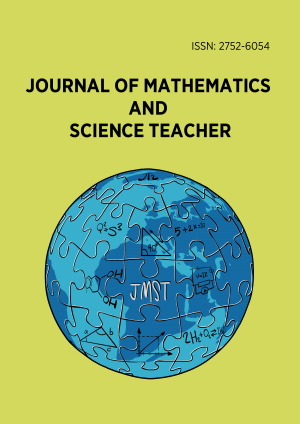Abstract
This article reports the impact of incorporating the activity and reality principles of realistic mathematics education (RME) when teaching systems of linear equations (SLE). The impact is considered in relation with learners’ achievements. A quantitative approach typified by a quasi-experimental design with non-equivalent groups was followed. 50 grade 10 learners of secondary school mathematics participated in the study. 26 of these composed the control group while 24 consisted of the experimental group. The study site was conveniently chosen while participants were randomly assigned to both groups after pre-testing. Treatment was an approach, which included the reality and activity principles of RME to teach SLE. By contrast, the control group was taught in a conventional manner. Data were collected through pre-testing and post testing. Post-treatment analyses such as the ANOVA test showed that there was a significant difference in achievement between the experimental and the control groups. In this regard, learners who were taught based on a method that included the activity and reality principles achieved higher scores than the group, which learned through conventional teaching methods. This finding demonstrates that integrating the activity and reality principles of RME in the teaching of SLE can contribute to learners’ high achievement. It is therefore recommended that mathematics teachers should integrate RME principles in their teaching as a way of enhancing learners’ performance in mathematics topics.
License
This is an open access article distributed under the Creative Commons Attribution License which permits unrestricted use, distribution, and reproduction in any medium, provided the original work is properly cited.
Article Type: Research Article
Journal of Mathematics and Science Teacher, Volume 3, Issue 1, 2023, Article No: em022
https://doi.org/10.29333/mathsciteacher/12609
Publication date: 01 Jan 2023
Online publication date: 06 Nov 2022
Article Views: 2089
Article Downloads: 1511
Open Access References How to cite this article
 Full Text (PDF)
Full Text (PDF)